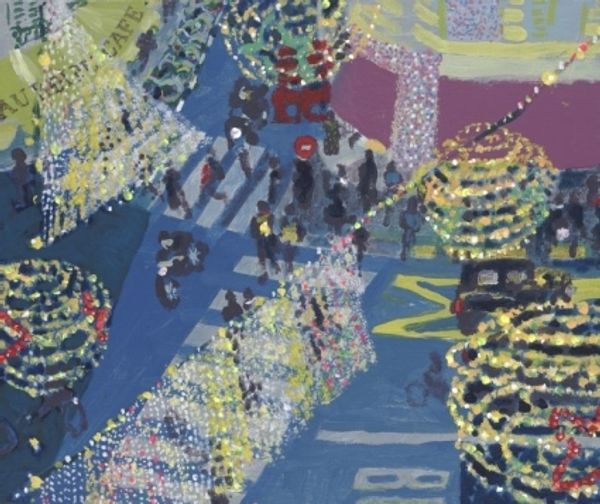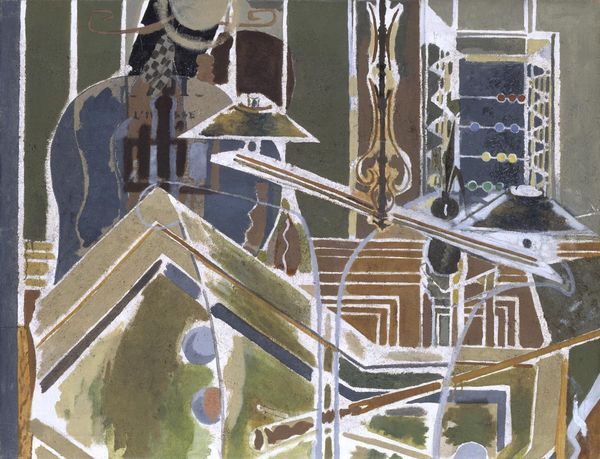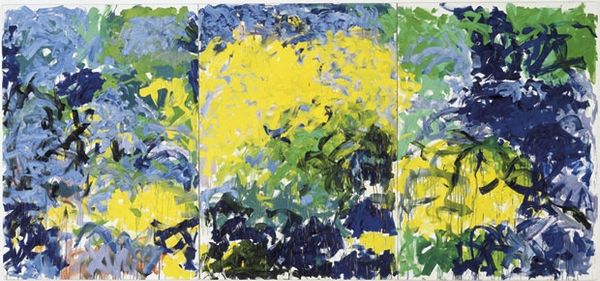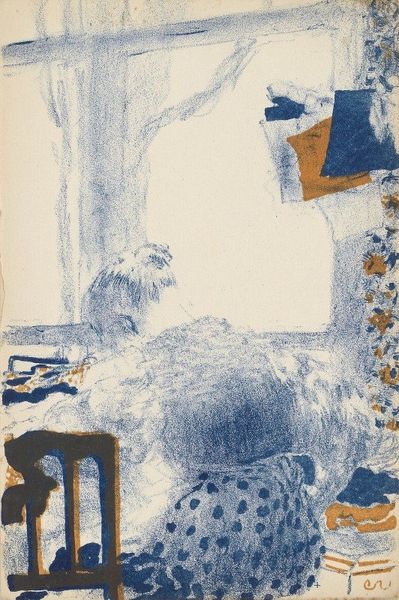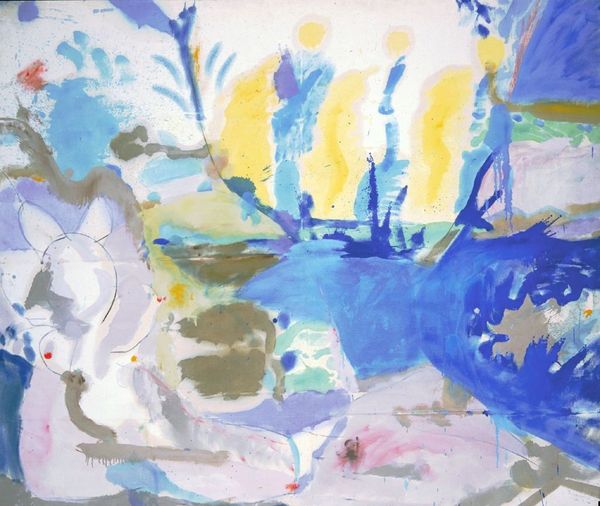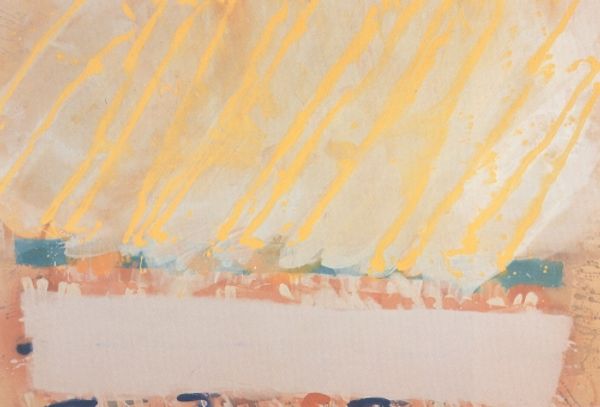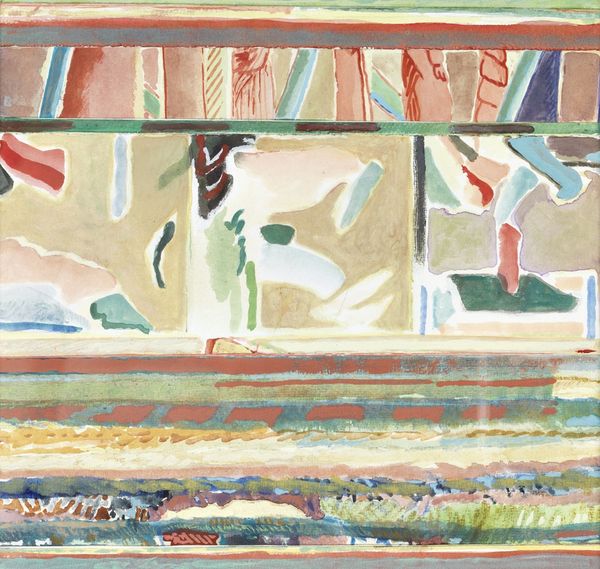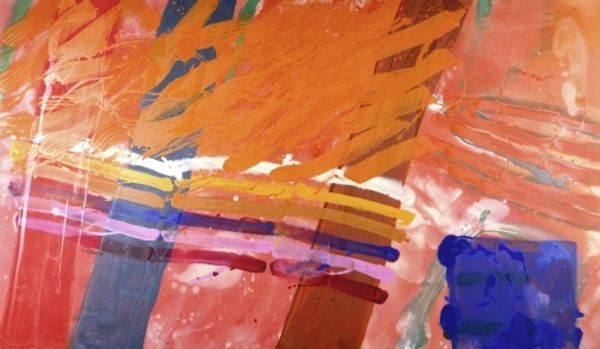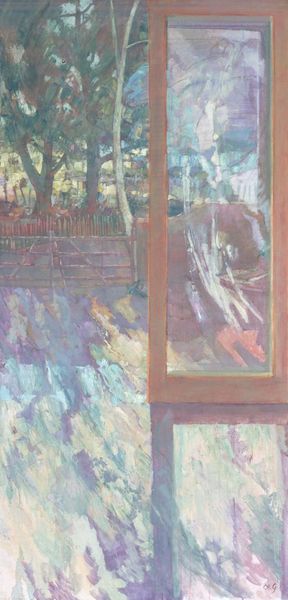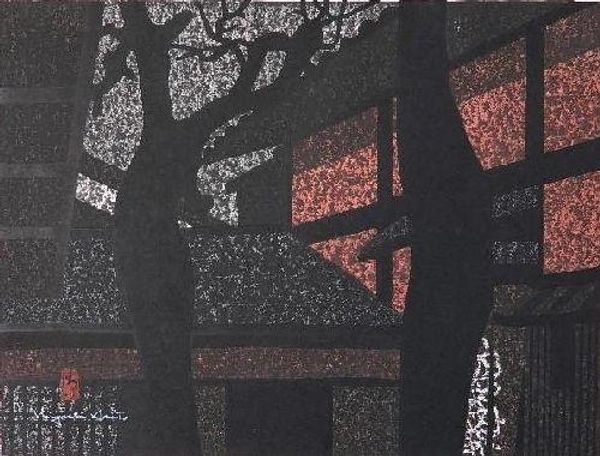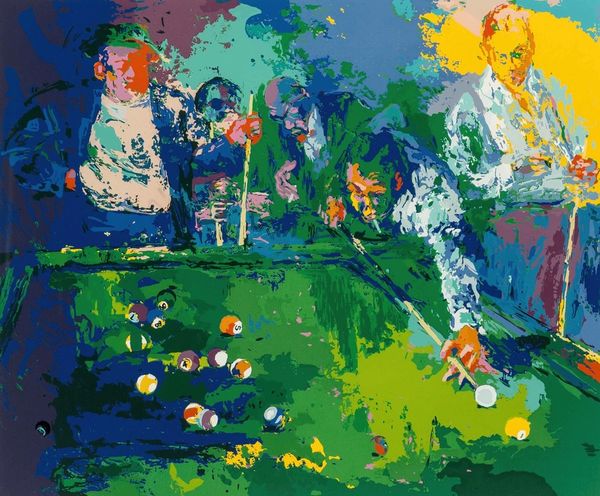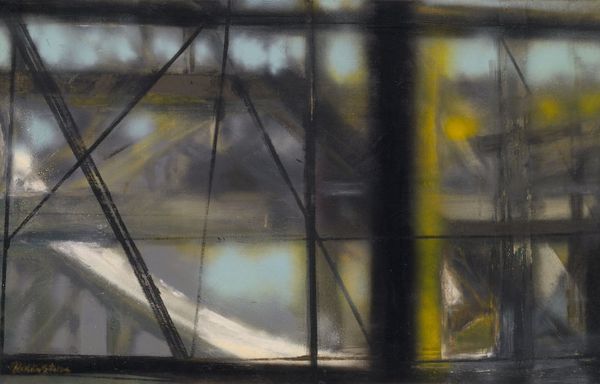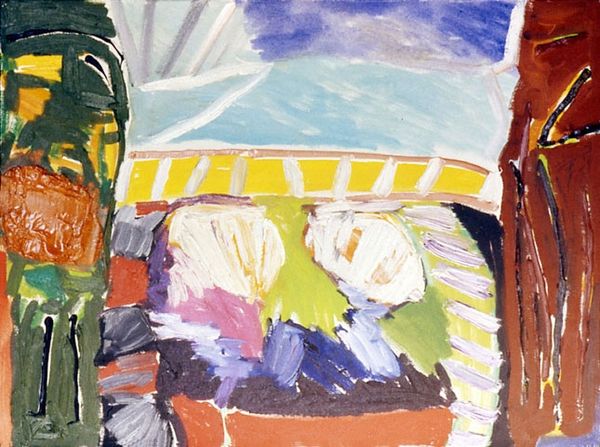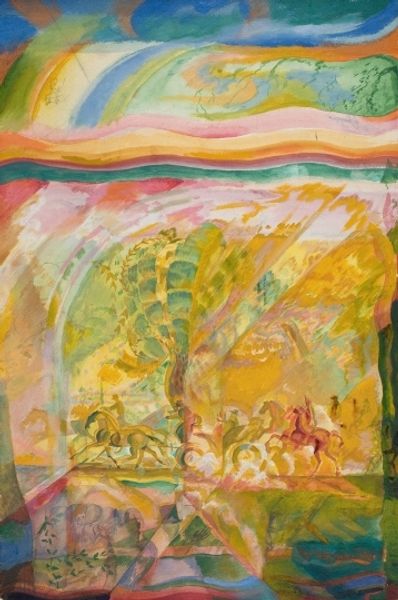
Copyright: Brett Whiteley,Fair Use
Curator: Brett Whiteley painted "The Window, Lavender Bay" in 1980, an oil painting rendered in an impressionistic style. What’s your first take on it? Editor: The prominent use of blue immediately strikes me. It's not just a color, but a mood—one of contemplation, perhaps even a touch of melancholy. The brushstrokes, while impressionistic, seem deliberately chosen to evoke this specific feeling. Curator: The window is such a powerful symbol, isn't it? Representing both confinement and possibility, the inside/outside dynamic is at the heart of human consciousness. Windows can evoke many conflicting associations—isolation and invitation, boundary and escape. Editor: Absolutely, and this interplay feels incredibly relevant today. In the late 70's and 80’s, the view from home represented stability, especially in times of economic uncertainty, and anxieties around social change. This image can be seen in the broader social context as a kind of meditation on both private solace and public crisis. Curator: Whiteley plays with those contradictions wonderfully, doesn't he? See how the architectural structure opposes nature? It evokes this sense of tension: that the 'controlled' and human world are always just facing, framed by, and facing off with the fluid and alive "chaos" of nature, life... the ocean, our natural condition, the garden outside. And note the perspective, we are situated “inside." The question then becomes, are *we* safe in here, or trapped in here? Editor: I agree, and this painting's strength lies in the ambiguity and uncertainty—not just showing a beautiful landscape, but using color, light, and compositional strategy to explore the personal relationship with our physical and social realities. It prompts a viewer to reflect on what ‘home’ really means at the threshold between intimate interiority and broader environmental or political awareness. Curator: I’m fascinated by the window itself, which serves almost as an archetype—the border that separates our consciousness from the world outside, which at times of political stress offers sanctuary. I agree with you that the window as motif becomes potent, maybe more so now, than perhaps it did when Whiteley conceived it. Editor: It’s interesting how his window invites endless cultural readings across generations, speaking of our continuous engagement with themes of separation, refuge, and vision. Thanks for drawing those historical contexts to the foreground—it makes one wonder about one's own place within it all!
Comments
No comments
Be the first to comment and join the conversation on the ultimate creative platform.
